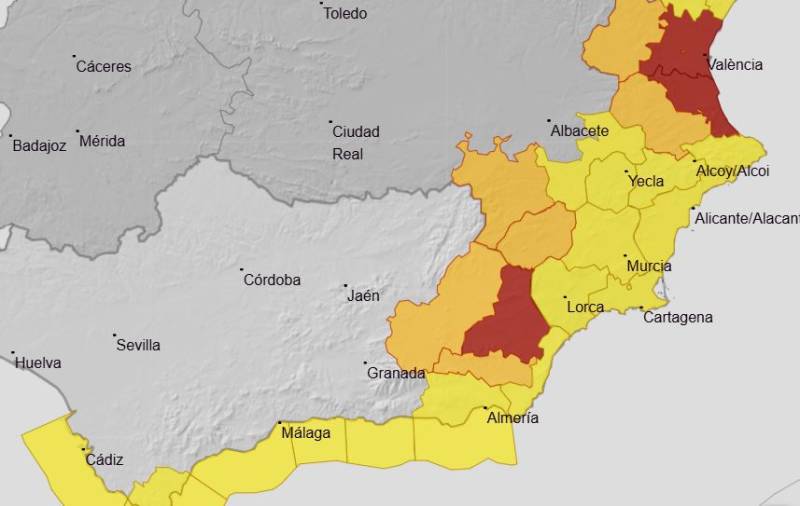- Region
- Vega baja
- Marina Alta
- Marina Baixa
- Alicante
- Baix Vinalopo
- Alto & Mitja Vinalopo
-
ALL TOWNS
- ALICANTE TOWNS
- Albatera
- Alfaz Del Pi
- Alicante City
- Alcoy
- Almoradi
- Benitatxell
- Bigastro
- Benferri
- Benidorm
- Calosa de Segura
- Calpe
- Catral
- Costa Blanca
- Cox
- Daya Vieja
- Denia
- Elche
- Elda
- Granja de Rocamora
- Guardamar del Segura
- Jacarilla
- Los Montesinos
- Orihuela
- Pedreguer
- Pilar de Horadada
- Playa Flamenca
- Quesada
- Rafal
- Redovan
- Rojales
- San Isidro
- Torrevieja
- Comunidad Valenciana
article_detail
Date Published: 13/08/2024
Woman dies of mosquito-borne West Nile Virus in Andalucía
Ten new cases of the potentially lethal infection have been reported in Sevilla this week

The deadly West Nile Virus (WNV) is sweeping through Andalucía at a rate that is alarming the medical community and now this tropical disease has claimed a victim: an 87-year-old woman in the Sevilla municipality of Coira del Río.
Between August 1 and 8, the virus showed up in mosquitoes trapped and examined in both Cádiz and the Andalusian capital and in the last couple of days, ten new cases have been reported, one of which is the elderly victim who had underlying health issues. Five of these patients have fully recovered already.
West Nile virus (WNV) is a mosquito-borne zoonotic disease that can infect humans and other vertebrate animals, and it’s closely related to other often lethal viruses such as yellow fever, dengue and Zika. Worryingly, around 80% of infected patients don’t display any symptoms at all, while many mistake WNV for the flu.
Mild indicators like fever and aches typically resolve on their own within a few days. However, in rare cases, WNV can lead to severe neuroinvasive disease, including encephalitis (inflammation of the brain) or meningitis (inflammation of the membranes surrounding the brain and spinal cord).
The Public Health department’s weekly report has indicated high population densities of female mosquitoes capable of transmitting diseases in several areas of Sevilla and Cádiz. Specifically, Villamanrique de la Condesa, Los Palacios y Villafranca, Gelves, Dos Hermanas, Bollullos de la Mitación and Barbate have been identified as high-risk areas (Grade IV and III). Meanwhile, Almensilla, Benalup-Casas Viejas and Vejer de la Frontera are showing medium-risk levels (Grade II).
Because of this huge surge in infections in Andalucía, the authorities have placed mosquito traps in 26 high-risk municipalities. From here, they can test the insects for the virus and periodically spray the areas to slow down the spread of the disease.
Prevention and control
There is currently no specific treatment or vaccine available for WNV infection in humans. Therefore, prevention focuses on avoiding mosquito bites and controlling mosquito populations:
- Use insect repellents when outdoors, especially during dawn and dusk when mosquitoes are most active.
- Wear long-sleeved shirts and long pants when possible to reduce exposed skin.
- Ensure that window and door screens are in good condition to prevent mosquitoes from entering homes.
- Eliminate standing water sources, such as containers, tires or puddles, where mosquitoes can breed.
Also of interest: Spain on alert—Oropouche virus and West Nile virus spark concern
Image: Junta de Andalucía
staff.inc.ali
Loading
See more news about animals in Spain:
OR
Sign up for the Spanish News Today Editors Roundup Weekly Bulletin to get a comprehensive email with all the week’s news for Spain, Murcia, Alicante and Andalucía.
Get a sneak peek – here are a few of our recent Subscription Bulletins:
Discount Special Offer subscription:
36.95€ for 48 Editor’s Weekly News Roundup bulletins!
Please CLICK THE BUTTON to subscribe.
Contact Murcia Today: Editorial 000 000 000 /
Office 000 000 000




















